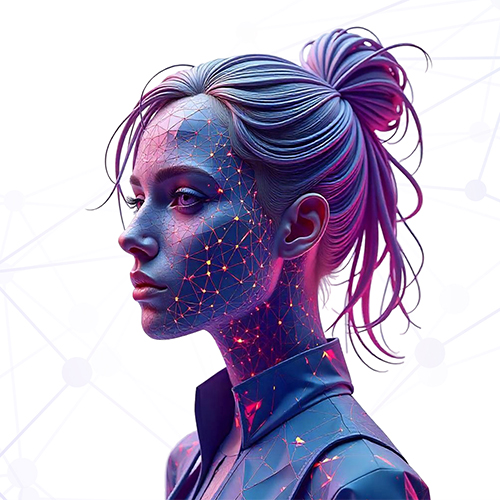
How Generative AI is Boosting Productivity and Innovation in Business

In today’s rapidly evolving technological landscape, businesses continually seek innovative methods to remain competitive and efficient. As organizations around the globe strive to enhance productivity and spearhead innovation, generative AI emerges as a groundbreaking tool that reshapes the business arena. By leveraging vast computational power, this technology empowers businesses to automate, innovate, and achieve unprecedented efficiency.
The integration of generative AI in various sectors marks a new era of smart business practices. Its potential to transform everyday operations into dynamic and intelligently orchestrated processes has sparked keen interest across industries. This article delves into how generative AI fosters both productivity and innovation, ultimately transforming the business world.
Introduction to Generative AI
Generative AI represents a subfield of artificial intelligence focused on creating data, content, and patterns based on input data. At its core, generative AI uses algorithms to generate seemingly new information. This technology finds its roots in neural networks and machine learning models designed to mimic human thought processes, producing outputs that often rival the originality of human-created content.
Historically, businesses have harnessed AI primarily for data analysis and predictive insights. However, generative AI takes this a step further. It not only analyzes but also produces results that can be utilized for creative purposes, ranging from writing articles to designing intricate graphics. This shift from data-centric applications to creative implementation is revolutionizing numerous industries.
The Creative Power of Generative AI
One of the most fascinating aspects of generative AI is its ability to learn from vast amounts of data, enabling it to generate content that is not only coherent but also contextually relevant. For example, in the realm of natural language processing, models like OpenAI’s GPT-3 can produce essays, poetry, and even dialogue that closely resembles human writing. This capability opens up new avenues for content creation, allowing businesses to automate tasks that were once labor-intensive, such as drafting marketing materials or generating reports. Moreover, the technology is continuously evolving, with researchers exploring ways to enhance the creativity and diversity of the outputs.
What is Generative AI?
Generative AI is fundamentally about creating. Unlike traditional AI, which focuses on categorization or prediction, generative AI constructs new possibilities by learning patterns and structures from existing data. It leverages algorithms like Generative Adversarial Networks (GANs) and transformer models to replicate patterns and generate novel outputs. These technologies allow the AI to not only understand the nuances of the data it analyzes but also to innovate upon them, creating unique combinations and variations that were previously unimaginable.
The capacity to create realistic images, scripts, music, and even software code marks the transformative potential of generative AI. Businesses can utilize these capabilities to enhance product offerings, optimize processes, and explore innovative solutions to existing challenges. For instance, in the realm of marketing, generative AI can produce personalized content tailored to individual consumer preferences, thereby increasing engagement and conversion rates. This adaptability makes it an invaluable tool in today’s fast-paced digital landscape.
Generative AI in Visual Arts and Design
In the visual arts, generative AI is making waves by enabling artists and designers to collaborate with algorithms, resulting in innovative artworks and designs. Tools like DALL-E and Midjourney allow users to create stunning images from simple text prompts, showcasing the potential of AI as a creative partner. This intersection of technology and artistry not only expands the toolkit available to creators but also challenges traditional notions of authorship and creativity. As generative AI continues to advance, it raises important questions about the future of creative professions and the ethical implications of machine-generated content.
The Evolution of Generative AI in Business
The journey of generative AI in business has been marked by incremental discoveries and groundbreaking advancements. Initially, businesses were cautious in adopting AI for creative processes. However, as the technology matured, so did its applications. Industries ranging from advertising to entertainment now actively employ generative AI to craft compelling content efficiently. The ability to generate high-quality visuals or scripts in a fraction of the time it would take a human has led to a paradigm shift in how creative teams operate, allowing them to focus more on strategy and less on execution.
From Hesitation to Integration: AI’s Role in Modern Business
Companies have recognized that generative AI can drastically reduce the time and cost associated with creative development. From automating customer service interactions to designing fashion items, the ability to generate complex data-driven outcomes has opened new avenues for enterprise growth and innovation. Furthermore, as generative AI continues to evolve, its integration into workflows is becoming increasingly seamless.
For example, in the gaming industry, developers are using AI to create expansive virtual worlds, where the AI not only designs environments but also generates storylines and character dialogues, enriching the player experience. This level of creativity and efficiency is reshaping the competitive landscape, compelling businesses to adapt or risk obsolescence in an era defined by rapid technological advancement
Enhancing Productivity with Generative AI
Generative AI’s capacity to streamline operations is a game-changer for businesses keen on maximizing productivity. By handling routine yet essential tasks, it frees up human resources to focus on more strategic initiatives, allowing companies to optimize their workflows.
Moreover, generative AI’s predictive capabilities aid businesses in forecasting trends and making informed decisions. Its application ranges from supply chain management to customer service, with efficiency as a central theme.
Automating Routine Tasks
One of the most significant advantages of generative AI is its ability to automate mundane and repetitive tasks. This includes generating reports, managing inventory, and scheduling. By letting AI handle these tasks, companies can redirect their workforce toward more value-driven and innovative activities.
Such automation not only improves operational efficiency but also boosts employee satisfaction as they engage in creative and strategic roles. The transition from a mechanical workflow to an intuitive and thought-driven process underscores how AI supports human expertise rather than replacing it.
Streamlining Decision-Making Processes
Generative AI facilitates informed decision-making by analyzing vast datasets and offering insights that human operators might overlook. This technology proves invaluable in scenarios requiring quick yet well-informed judgments, such as market trend predictions and risk assessments.
The predictive analytics capability of generative AI empowers decision-makers with data-backed strategies. By enabling faster and more accurate decisions, companies can adapt swiftly to changes, remaining competitive in their industries.
Driving Innovation through Generative AI
The prowess of generative AI in fostering innovation within businesses cannot be overstated. By bridging gaps in creativity and offering novel solutions, it propels companies into the future of business practices. Innovation in product development and team collaboration are just a few areas witnessing a transformative impact.
Organizations utilizing generative AI not only expand their creative capacity but also gain a competitive edge. The ability to innovate rapidly sets a new benchmark for business excellence and sustainability.
Creating New Products and Services
Generative AI enables businesses to create diverse products and services tailored to customer needs. From designing cutting-edge technologies to crafting personalized customer experiences, AI-generated insights inform every stage of product development.
This technology’s ability to simulate various scenarios before implementation allows companies to refine their offerings, ensuring they meet market demands effectively. Hence, generative AI serves as both a tool for creativity and a catalyst for business expansion.
Fostering Creative Collaboration
Fostering collaboration is another domain where generative AI demonstrates its potential, promoting synergy between teams by encouraging diverse inputs. By offering tools that aid in creativity and brainstorming, it helps conglomerate different ideas into cohesive outputs.
Through AI-powered platforms, teams can collaborate more effectively, regardless of geographical barriers. Such interactions ensure a constant exchange of innovative ideas and strategies, propelling organizations toward more successful ventures.
Challenges and Considerations
While generative AI offers numerous benefits, its adoption is not without challenges. Concerns over data privacy, ethical use, and integration with existing systems pose obstacles businesses must overcome to fully leverage its potential.
Moreover, organizations must navigate the balance between AI-driven outcomes and human oversight, ensuring the technology augments human skills rather than supplanting them. By addressing these considerations, businesses can harness generative AI responsibly and effectively.
Ethical Implications of Generative AI
As generative AI becomes increasingly integrated into business processes, ethical considerations arise around its implementation. Issues related to data privacy, copyright, and the potential misuse of AI-generated content are continually debated by industry leaders and policymakers.
Responsible AI practices must be established to ensure transparency and accountability. Companies are urged to develop ethical guidelines that dictate AI deployment, fostering trust and reliability in AI-generated outcomes. Such measures are crucial in safeguarding against unintended consequences that may jeopardize consumer trust and business integrity.
Integration on Gen AI with Existing Business Systems
The seamless integration of generative AI within existing business systems presents both opportunities and challenges. Achieving interoperability between AI models and legacy systems is essential for businesses aiming to unlock the full potential of AI technologies.
Collaboration between IT teams, AI specialists, and business leaders is instrumental in devising strategic frameworks for successful AI adoption. The goal is to align AI capabilities with organizational objectives, ensuring a streamlined transition that supports growth and innovation.
Embark on Your Generative AI Journey with Techverx
Ready to harness the power of generative AI and elevate your business to new heights of productivity and innovation? At Techverx, we’re committed to turning your bold ideas into reality with our custom software development expertise. With a decade of experience and a passion for cutting-edge solutions, our team is poised to help you integrate generative AI seamlessly into your operations.
Hiring engineers?
Reduce hiring costs by up to 70% and shorten your recruitment cycle from 40–50 days with Techverx’s team augmentation services.
Related blogs


